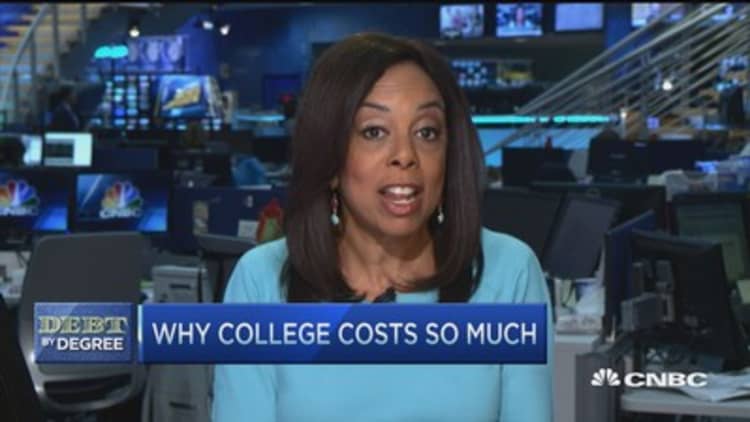

Applying for federal financial aid for college will be a little easier for millions of students and families next year, under a proposal announced by President Barack Obama on Monday.
The federal government will allow students to apply for college aid based on their family's income from two years earlier instead of the past year. Starting in October 2016, students will be able to fill out the Free Application for Federal Student Aid, known as the FAFSA, using data from 2015 tax returns. Previously, students had to wait until at least January to fill out the student aid forms as their parents finalized their 2016 tax returns.
"This puts things in a logical timeline," said Lauren Asher, president of the Institute for College Access & Success, a nonprofit policy and research organization. "It means students will be able to apply for aid earlier and more easily, and make better informed decisions about where to apply and how to pay for college." The institute had been urging lawmakers and presidential administrations to make this change since 2007.
Students filling out the FAFSA next year will also be able to electronically retrieve tax information filed for an earlier year. That eliminates the need to transcribe information from previous applications or estimate answers to up to 20 "high-stakes" questions, Asher said.
In the 2013-14 academic year, more than 4 million student aid applicants, or about 20 percent of the total applying for aid, were unable to electronically transfer their tax data because they applied for aid before they filed their taxes, according to Department of Education data.
"Students can apply for aid when or even before they apply to college instead of having to wait weeks or months until both the FAFSA and the required tax information become available," Asher said. The data transferred from the Internal Revenue Service for the FAFSA will not need as much verification, she said, which reduces paperwork burdens for students and costs for colleges.
The Obama administration has made simplifying the FAFSA form and filing process a priority. On average, students and families now spend about 21 minutes filling out the FAFSA. That's about one-third of the time it took seven years ago, according to the White House. It's pushing to further streamline the FAFSA process.
An estimated 2 million students who are enrolled in college and would be eligible for a Pell Grant didn't apply for aid, according to the White House, which argues that a simplified FAFSA form would help more students get grants to help cover college costs.
"The complexity of the FAFSA scares off students, especially low-income students," said Mark Kantrowitz, senior vice president and publisher of Edvisors.com, a college financial planning website.
Economists found in a randomized trail that a streamlined FAFSA application process could boost the share of low-income students who attend college by 8 percentage points to 36 percent from 28 percent.
University of Michigan researchers studied the FAFSA form and found "dozens of questions on the FAFSA contribute virtually nothing to the determination of grant aid," wrote Susan Dynarski, one of the researchers, in a recent blog post for the Brookings Institution.
Obama has urged Congress to pass bipartisan legislation to simplify FAFSA by eliminating up to 30 questions that are "burdensome and unnecessarily complex" and don't aid eligibility
But a simplified FAFSA is only one of part of the college financing equation. "We need to have the colleges adopt similar processes to FAFSA," Kantrowitz said.





.jpg?v=1532564705&w=160&h=90)